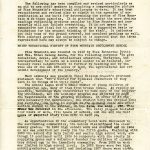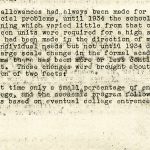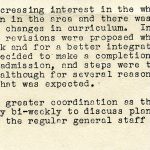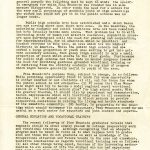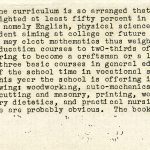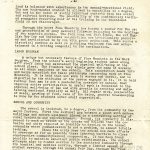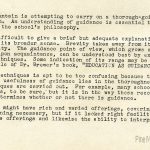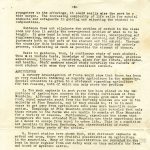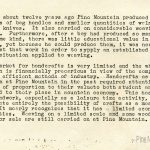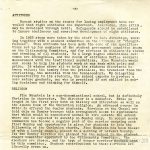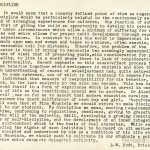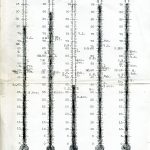Pine Mountain Settlement School
Series 09: BIOGRAPHY – Staff
Series 04: ADMINISTRATION – Directors
Arthur W. Dodd, Staff, 1932-1949
Interim Director 1942
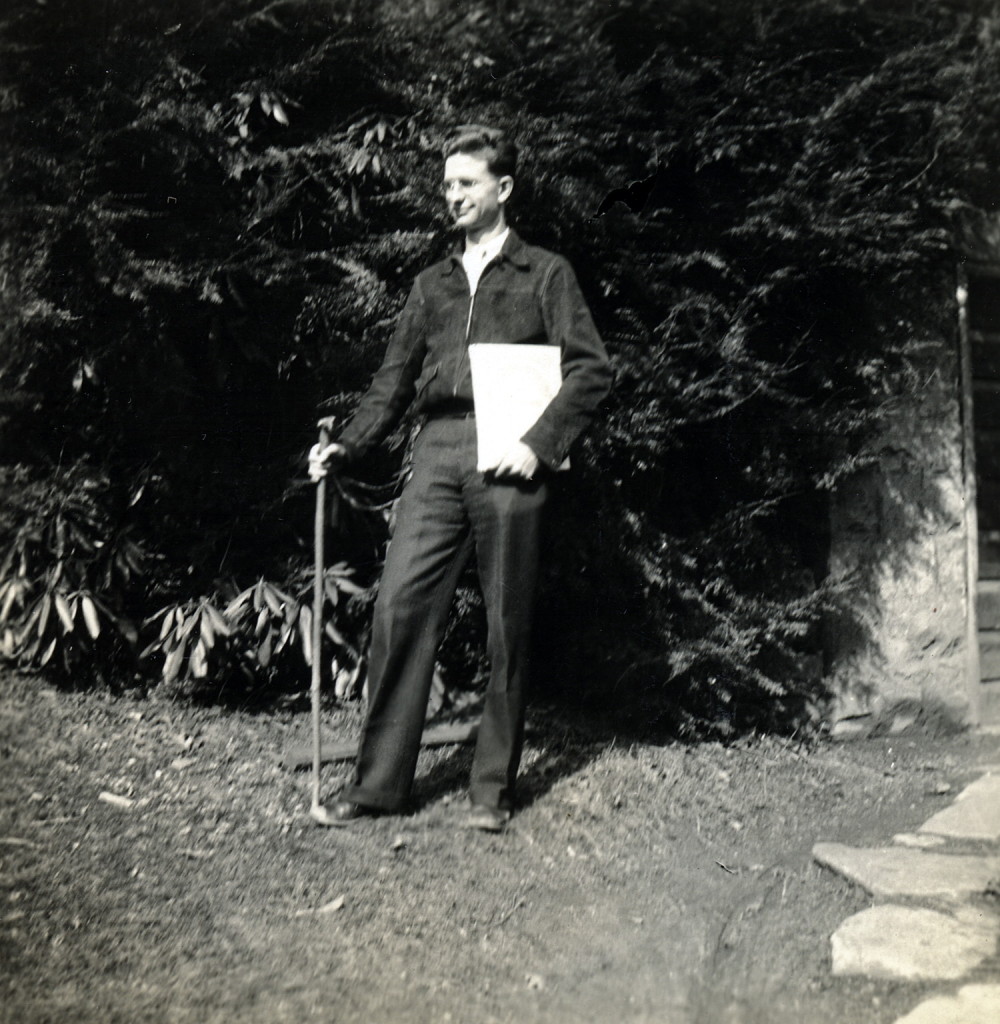
Arthur Dodd. [X_100_workers_2635_mod.jpg]
ARTHUR W. DODD 1946 General Statement of History and Philosophy of PMSS for Staff
Arthur W. Dodd:
Business Manager, Teacher 1932 – 1934
Photographer, Filmmaker, Organist, Pianist
School Principal 1934 – 1949
Acting Director 1942
TAGS: Arthur W. Dodd, Glyn Morris, cultural folkways, rural isolation and impoverishment, community-school cooperation, counselors, agriculture courses, general education, progressive education, vocational training, craft training, weaving, discipline, labor programs, guidance, agriculture training, religion, child-centered programs, community groups, Consumers Cooperative Store, mechanization
The original document was produced by Glyn Morris in 1940, just two years short of his departure from the School. It was developed to meet the need for a general statement of purpose based on the history and philosophy of the School for members of the existing and incoming staff. When reviewed against administrative documents created within the decade before Morris, the emergence of a new institutional philosophy may be seen.
This 1946 Statement is a revision by Arthur W. Dodd, who served as Principal of the Pine Mountain Settlement School from 1934 until 1949 and as an Interim Director of the School in 1942. It provides a useful comparison of the two eras. Dodd has used the original document created by Glyn Morris and has added his observations and has also shortened the document, removing sections that he deemed no longer relevant.
Glyn Morris brought to the school a palpable encounter with the world outside the narrow valley of Pine Mountain. Young but, world-wise, Morris introduced a strain of Progressive Education that attempted to integrate the most current views on education, agriculture, economics, and religion. Arthur Dodd was strongly influenced by Morris and came to the School at roughly the same time as Morris. As a graduate of Berea College, Dodd was strongly influenced by the Berea view of Appalachian service, but he also brought his own relevant experience with the poverty of share-cropping in Georgia and the difficult life of individuals living in rural poverty. Dodd was also strongly influenced by the work of the progressive educator, John Dewey, and had absorbed his educational philosophy from his graduate work at Columbia University.
Morris worked hard to shift the School and its growing body of young adults to the contemporary world of work and civic responsibility and Dodd followed this path, using his contact with fellow staff-worker Everett K. Wilson and others at the School to help shape this perspective to his own views.
The headings of 1940 document and the later 1946 document align, but there are subtle and not so subtle changes to each of the sections.
In 1946, when Glyn Morris’s “General Statement of History and Philosophy …” was revised by then Principal at the School, Arthur Dodd, there does not seem to be significant push-back. When compared to the earlier Glyn Morris document of 1940, the Arthur Dodd’s revision of the “General Statement of History and Philosophy of Pine Mountain Settlement School” is a remarkable window into the changes in administration and the administrators’ perceptions of the mission of the School.
See Also:
GLYN MORRIS 1940 General Statement of History and Philosophy of PMSS for Staff
TRANSCRIPTION: ARTHUR W. DODD 1946 General Statement of History and Philosophy of PMSS for Staff
[Note: The following transcription has been slightly edited for clarity.]
001
GENERAL STATEMENT OF HISTORY AND PHILOSOPHY
OF PINE MOUNTAIN SETTLEMENT SCHOOL
Revised, 1946
The following has been compiled and revised particularly as an aid to new staff members in acquiring a comprehensive picture of Pine Mountain’s educational philosophy to date. It has been reconsidered and revised also to submit to the agencies of accreditation as one basis for determining the status of Pine Mountain with those agencies. It is presented under the more obvious headings reflecting problems peculiar to Pine Mountain and necessarily will not include everything. It is not meant to be exhaustive nor final but to serve only as a suggestive basis or touchstone for the subsequent thinking of the staff. It indicates not only some of the ground covered, but unsolved problems as well. With constant growth and adjustment it is expected that the ideas represented here may always be subject to change.
BRIEF EDUCATIONAL HISTORY OF PINE MOUNTAIN SETTLEMENT SCHOOL
Pine Mountain was founded in 1913 by Miss Katherine Pettit and Mrs. Ethel de Long Zande, for the following purpose: “To give industrial, moral, and intellectual education, Christian, but non-sectarian; to serve as a social center in an isolated, intensely rural neighborhood; to further by teaching and by the wise use of its own 235 acres of land, the agricultural and economic development of the country.”
Much emphasis was placed on Uncle William Creech‘s profound statement that “Hit’s better for folkses characters if they larn to do things with their hands.”
The school began with a small number of young children of kindergarten age, many of them from broken homes. As rapidly as possible, buildings were constructed to take care of the increasIng enrollment, and the academic program was adjusted to meet the requirements of the growing children. In order to do the work necessary for maintenance, the student body was divided into two sections, one going to school in the morning while the other section worked in the kitchen, on the farm, the shop , etc. This order was reversed in the afternoon. The daily program included four hours of work, five hours of school, and one and one-half hours of required study from 6:30 to 8:00 pm.
As opportunities in the elementary level were increased in the surrounding communities, the school discontinued the elementary grades. In 1920 high school work was started and in 1924 no one was admitted not ready for the fifth grade. Beginning with 1930 the school did only junior and senior high school work, although it continued until 1936 to cooperate with the county in supplying space and a volunteer teacher for children of elementary school age in the immediate community. From 1938 on work was limited to high school level. In 1923 there were two high school graduates, and until and including 1927 there were eight. There is no record of other graduates until 1931, when there were two, but from 1932 on the graduating classes included anywhere from eight to 25 students. Including the present graduating class, two hundred and twenty-five students will have graduated from high school.
001a
Although allowances had always been made for students who presented special problems, until 1934 the school provided formal academic training which varied little from that of the usual high school. Sixteen units were required for a high school diploma. Some attempts had been made in the direction of more perfect adjustment to ‘individual needs” but not until 1934 did it seem wise to make any large scale change in the formal academic program. Since that time there has been more or less continuous study and adjustment. Those changes were brought about primarily by the recognition of two facts:
- At that time only a small percentage of enrollees were entering college, and the academic program following the traditional pattern was based on eventual college entrance. At the present…
002
…time, however, a study of graduates shows approximately one hundred of the total number of two hundred as starting in some institution of higher learning, including nurses training.
- Rapid changes in social and economic structure of Harlan and adjoining counties called for a type of training better adjusted to local needs.
The first changes in curriculum were in the direction of more emphasis on interpreting the area through the classroom and in giving more opportunity for student initiative, with less rigidity in requirements for graduation. An evening activities program, including study period, and use of the library was substituted for the required study period. The usual examinations at the end of each six weeks were dropped and letters were sent to parents instead of report cards. Students were given more opportunity to select their courses.
In 1935, with a three-day institute, a guidance program was begun, and a full-time counselor was added to the staff. Although there was no noticeable change in curricular offering, the guidance emphasis explained under “Guidance” began to take root. At the same time the staff continued its thoughtful consideration of both curriculum and method, and decided that it would be impossible to meet the requirements for graduation and college entrance while at the same time making any serious effort toward meeting the needs of the majority of youth who came to Pine Mountain. Therefore, the school decided to meet more fully the requirements of the latter. During 1935-37, as the staff continued its efforts to improve both method and curriculum, the two lower groups were started on flexible “child-centered” programs in which interest played a larger part than heretofore, although teachers continued with remedial work and drill which continued to be necessary. The child-centered groups were not successful enough to warrant their continuance. During this time also, the “Community Group” was started, beginning with five older girls, on the assumption that the experience of visiting homes up and down the creeks and being as helpful as possible under the supervision of the nurse would serve among other things the following useful purposes:
- Give practical experience and bring more realism into the school program.
- Provide the community with a much-needed service.
- Help bridge the gap between the culture of the school and that of the community.
- Provide youth with a responsible part in bringing about better living conditions.
At the same time the group, comparable with tenth grade, started the operation of a Consumer’s Cooperative Store which was to serve as a basis for a considerable part of their class work.
With the completion of the new workshop building in December of 1936 the program was revised so that it was possible for the entire student body to go to school at one time. The work program was reduced to two hours, and the present schedule effected.
002a
1937-38 saw increasing interest in the whole program of Pine Mountain’s function in the area and there was considerable thought given to necessary changes in curriculum. In the spring of 1938 further curricular revisions were proposed which allowed more time for vocational work and for a better integration of subjects. At this time it was decided to make a completion of the 8th grade a prerequisite for admission, and steps were taken to offer post-high school work, although for several reasons there was not the response to this that was expected.
There was also greater coordination as the teachers of each class met regularly bi-weekly to discuss plans and students. This was in addition to the regular general staff meetings.
003
GENERAL PURPOSE OF PINE MOUNTAIN
As a background to any statement defining Pine Mountain’s general purpose the following must be kept in mind: the specific emergency for which Pine Mountain was founded has in some measure disappeared. In other words, the need for a school for the very small percentage of mountain youth of high school age who wished but could not get it in the public schools was no longer acute.
Public high schools have been established and school buses are now serving where once there were none. In the meantime, the underlying economic and social conditions have not been remedied, but have actually become more acute. That problem has to do with increasing waste of human and material resources, population pressure upon sub-marginal soil, the need for planning and cooperation, for experimentation, for an education which is practical and touches everyone in this area, an area which has the highest birth rate in America. While the public high schools had absorbed a large proportion of youth once waiting to get into private secondary schools, that group (high school) is only a small proportion of youth which starts in the first grade. Furthermore, the public high schools had then made no marked progress toward the need for providing guidance grounded vocational training or of deviating from the strictly academic to any kind of program which might be more generally useful to youth of the area.
Pine Mountain’s purpose then, subject to change, is as follows: While providing opportunity first to youth for whom opportunity is either limited or not available at all, and for those for whom the public school is not adequate– (1) It seems that Pine Mountain might well try to become a model regional rural vocational school or a “vocational school plus” for high school youth. With its greater freedom, it should also by experiment and demonstration, hasten improvements which will inevitably come to all secondary schools. (2) It should seek also by direct methods to provide cooperative assistance in raising the living and health standards of its immediate community. (3) Lastly, in proportion to the prestige which should accompany its uniqueness, Pine Mountain could be useful as a work center for educators and youth leaders and experts.
GENERAL EDUCATION AND VOCATIONAL TRAINING
The recent follow-up of Pine Mountain graduates reveals that emphasis should be about evenly placed on college preparatory work and vocational training. Although recognizing that an adequate program must be based on facts as to what happens both to graduates and those who do not graduate, as well as knowledge of the occupational situation and future trends in the area and elsewhere, tentative conclusions as regards vocational training are as follows: (1) All other things being equal, because of the increasing mechanization in all areas of life the student who has had experience with tools and shop work has some advantage over the student who has not. (2) In the mountain regions and this area particularly, there is a deficiency in all kinds of trained workers and service occupations and that employment might be found by more youth, would seem to indicate that training should be offered on the late high school level.
003a
At present the curriculum is so arranged that all students have their program weighted at least fifty percent in the general education courses, namely English, physical sciences, and social sciences. A student aiming at college or future training of a technical nature may elect mathematics thus weighting his program in the general education courses to two-thirds of his total load. The student desiring to become a craftsman or a laborer is thus required to carry three basic courses in general education and spend the other half of the school time in vocational subjects of his own selection. This year the school is offering in the vocational fields the following: woodworking, auto-mechanics, elementary plumbing, stone cutting and masonry, printing, weaving, cooking and sewing, elementary dietetics, and practical nursing. The advantages of such a balance are probably obvious. The book-minded student’s….
004
…load is balanced with experiences in the manual-vocational field, The non-book-minded student is allowed to specialize to a degree, but not to the point of losing important contacts with his social and cultural heritage. The possibility of the academically inclined youngster receiving half of his training in the vocational field is not discouraged.
Through the years Pine Mountain has become a center for the use and preservation of many cultural folkways belonging to the heritage of the mountain people. The folk song and folk dance, the (?) English May Day and Christmas celebrations are traditionally preserved and participated in by all with great enthusiasm This serves a historical purpose as well as providing wholesome fun and entertainment in a setting congenial to its continuation.
LABOR PROGRAM
A unique but necessary feature of Pine Mountain is its work program. From the school’s early beginning student labor along with staff labor has maintained the physical well-being of the school plant. The founders very wisely gave the name of “workers” to all adult employees of the school. This connotation leads into and helps establish the basic philosophy concerning work at Pine Mountain, It is held that all work is worthy and useful, and is dignified by the attitudes of the person engaged in it. It is held further that man is not a push-button creature by nature; that vigorous active participation in useful work is essential to the physical well-being of man and aids greatly in creating and maintaining emotional stability as well. All repair work, preparation of meals, growing of food, care of the dairy, general housekeeping is done by the students under adult supervision.
SCHOOL AND COMMUNITY
The school is isolated, to a degree, from its community by two major factors. First the cultural gap between a plant with modern buildings and modern equipment placed in a contrasting setting of rural isolation and impoverishment. Second, its community is dispersed to such an extent up the creeks and hollows that the cohesion and unity expected or possible to develop in the normal community where communication is not a problem, is almost totally lacking.
Since its early days the school has made efforts to overcome as far as possible these inherent barriers to close constructive community-school cooperation. It has been found possible to maintain excellent public relationships. The school attempts also to render service to its scattered community through its hospital and medical service, through a limited amount of student service, through its annual Fair Day, through the farm program, and through various school events, social, religious, and otherwise, to which the community is invited to participate.
004a
GUIDANCE
Pine Mountain is attempting to carry on a thorough-going guidance program. An understanding of guidance is essential to an understanding of the school’s philosophy.
It is difficult to give a brief but adequate explanation of guidance in its broader sense. Brevity takes away from its subtlety and profundity. The guidance point of view, which grows clear and simple upon acquaintance, can be understood best by experience with its techniques. Some indication of its range may be gathered from the title of Dr. Brewer’s book, “EDUCATION AS GUIDANCE”.
Listing techniques is apt to be too confusing because the strength and usefulness of guidance lies in the thoroughness with which techniques are carried out. For example, many schools are using records, to be sure, but it is in the way these records are used that determines whether or not there is guidance.
A school might have rich and varied offerings, covering every kind of training necessary, but if it lacked (the) right facilities to interpret the offerings and likewise the ability to interpret the….
005
…youngsters to the offerings, it could easily miss the mark by a wide margin. The increasing complexity of life calls for special emphasis and safeguards in guiding and adjusting the student to complexities.
Guidance does not eliminate the problem of method in the classroom nor does it settle the ever-present problem of what is to be taught. It goes hand in hand with these matters, interplaying and supplementing, making a good balance and pointing out further adjustments both on the part of the student and the school. Through the counselor this becomes a continuously systematic and orderly process, eliminating as much as possible the element of chance.
Basic to guidance, then, is continuous study of each student. This will include tests, knowledge of home and background, previous experiences, interests, anecdotes, plans for the future, aptitudes, and health. Staff members should study carefully the records of each student with whom they have consistent contact.
AGRICULTURE
A cursory investigation of facts would show that there has been no very realistic thinking as regards agriculture in the mountains. Special attention is given to a statement regarding agriculture for two reasons, both of which can only state the problem:
- Too much emphasis in past years has been placed on the importance of agriculture courses in the formal curriculum at Pine Mountain. Although the rural mountain people grow much of their food, rural mountain youth from the far-away hollows are not in the majority at Pine Mountain, and if they should be, it is in most cases to get away from agriculture into some more lucrative occupation. Samplings of Pine Mountain students also revealed that only those return to the farms who are unable to remain at Pine Mountain for a variety of reasons. Furthermore, experience has shown that youngsters who have attended Pine Mountain use their experience here as a means to escape from rural to urban life. This is a condition not peculiar to Eastern Kentucky, but characteristic of rural sections in many parts of the nation.
- Recent studies have shown that, with different emphasis on method and crop, there are fruitful possibilities in agriculture in the mountains. Many of these possibilities are revealed to the 2018 boys in their regular farm and dairy work as they maintain the farm and herd Ayrshire cattle.
005a
CRAFTS
Until about twelve years ago Pine Mountain produced large quantities of bag handles and smaller quantities of walnut trays and paper knives. It also carried on considerable weaving as student labor. Furthermore, after a boy had produced so many products of the same kind, there was little educational value in what he was doing, yet because he could produce them, it was necessary to keep him at that work in order to supply an established market. The same situation applied to weaving.
The market for handcrafts is very limited and the whole occupation is financially precarious in view of the competition and extremely efficient methods of industry. Handcrafts as we have known them at Pine Mountain in the past required attention and expense out of proportion to their value to both student and the school and to their place in mountain economy. This has not precluded handwork, especially as a leisure time activity, nor does it eliminate entirely the possibility of crafts as a means of livelihood. It merely recognizes that it has a limited economic possibilities. Weaving on a limited scale and some woodworking objects for sale are still carried on at Pine Mountain.
006
ATTITUDES
Recent studies on the causes for losing employment have revealed that right attitudes are important. Attitudes, like skills, may be developed through habit. Safeguards should be established to ensure continuous and conscious development or right attitudes.
In 1938 steps were taken by the staff in this direction, working together with a student committee on the attitude of “Thoughtfulness.” This attitude has been made the core of the qualifications set up for nominees of the student government committees known as the Citizenship Committee, and for advances in citizenship status and standing of all students. To a large degree educational outcomes are intangibles, and the realm of attitudes defies accurate measurement with the traditional yardsticks. Pine Mountain wants and seeks to help its students work at any task with poise and pride. It wishes above all to help its students discriminate between values; the tawdry from the priceless, the transient from the everlasting, the material from the transcendent. By delegating responsibility to its students, the school expects to produce a more mature graduate, one who is practiced if not skilled in making decisions and thinking for himself.
RELIGION
Pine Mountain is a non-denominational school, but is definitely Christian in character. The director is a minister. Bible is taught in the first year both as history and literature as well as the source book of the Christian religion. An advanced course in Bible is offered the Junior students, Services at the Chapel are held only on Sunday because this arrangement seems to approximate that which would be considered normal in life outside the school where one is expected to worship on Sunday only. In recent years communion has become a regular part of the service occurring each first Sunday and opportunity is given for students to join the fellowship of the Christian church. Pine Mountain has been blessed with a lovely chapel, placed in a setting of natural beauty. Its two Sunday services are planned for the school by the student chapel committee appointed by the Citizenship Committee. The speakers are chosen, and the type of vesper services decided upon by this committee. Student contributions to these services are liberally drawn on.
006a
DISCIPLINE
It would seem that a clearly defined point of view as regards discipline would be particularly helpful in the continuously sacred task of arranging experiences for children. One function of schools is that of giving the child an opportunity to develop his personality under circumstances which allow a minimum of suffering for mistakes and which allows for proper habit development through repeated experiences. In contrast to this the world is impersonal in its demands upon men and women and takes no excuses, often exacting an unreasonable toll for mistakes. Therefore, the problem of the educator is that of trying to reconcile two seemingly irreconcilable points of view; that of preparing youth, with consideration for personality, to live in a world where there is lack of consideration for personality. Recent emphasis on this cause-effect process in human behavior together with development in analysis and more thorough understanding of causes of maladjustment has, quite naturally, led to some extremes, one of which is the tendency to remove from the individual that measure of responsibility for his behavior, which, in the last analysis no one else can assume. This has expressed itself in a form of experience which is as unreal in one area of life as the traditional school was in another. Dr Alexis Carrel goes so far as to assert that modern education develops to a maximum the inert selfishness of each boy and girl. Therefore it would seem that at Pine Mountain we should strive to make discipline real to our students. By discipline we mean, meeting requirements on time, conforming to regulations, obedience, giving in gracefully to the will of the majority, drill, developing a growing consciousness of self-discipline, and the development of an inner integrity and self-control which is the basis of real character. While safeguarding the rights of each individual to be heard on all matters not accepted and understood by him as a condition of his life at Pine Mountain, we should seek to cultivate in our students a point of view which respects delegated authority.
A.W. Dodd, Principal
007
Educational Program: A graph showing weights for Curriculum, Pupil Activities, Literary, Guidance, and Instruction.
GALLERY: ARTHUR W. DODD 1946 General Statement of History and Philosophy of PMSS for Staff
- 001 dodd_a_gen_statement_ed_001
- 001a dodd_a_gen_statement_ed_001a
- 002 dodd_a_gen_statement_ed_002
- 002a dodd_a_gen_statement_ed_002a
- 003 dodd_a_gen_statement_ed_003
- 003a dodd_a_gen_statement_ed_003a
- 004 dodd_a_gen_statement_ed_004
- 004a dodd_a_gen_statement_ed_004a
- 005 dodd_a_gen_statement_ed_005
- 005a dodd_a_gen_statement_ed_005a
- 006 dodd_a_gen_statement_ed_006
- 006a dodd_a_gen_statement_ed_006a
- 007 dodd_a_gen_statement_ed_007
See Also:
ARTHUR W. DODD Staff Interim Director
GLYN MORRIS 1940 General Statement of History and Philosophy of PMSS for Staff

